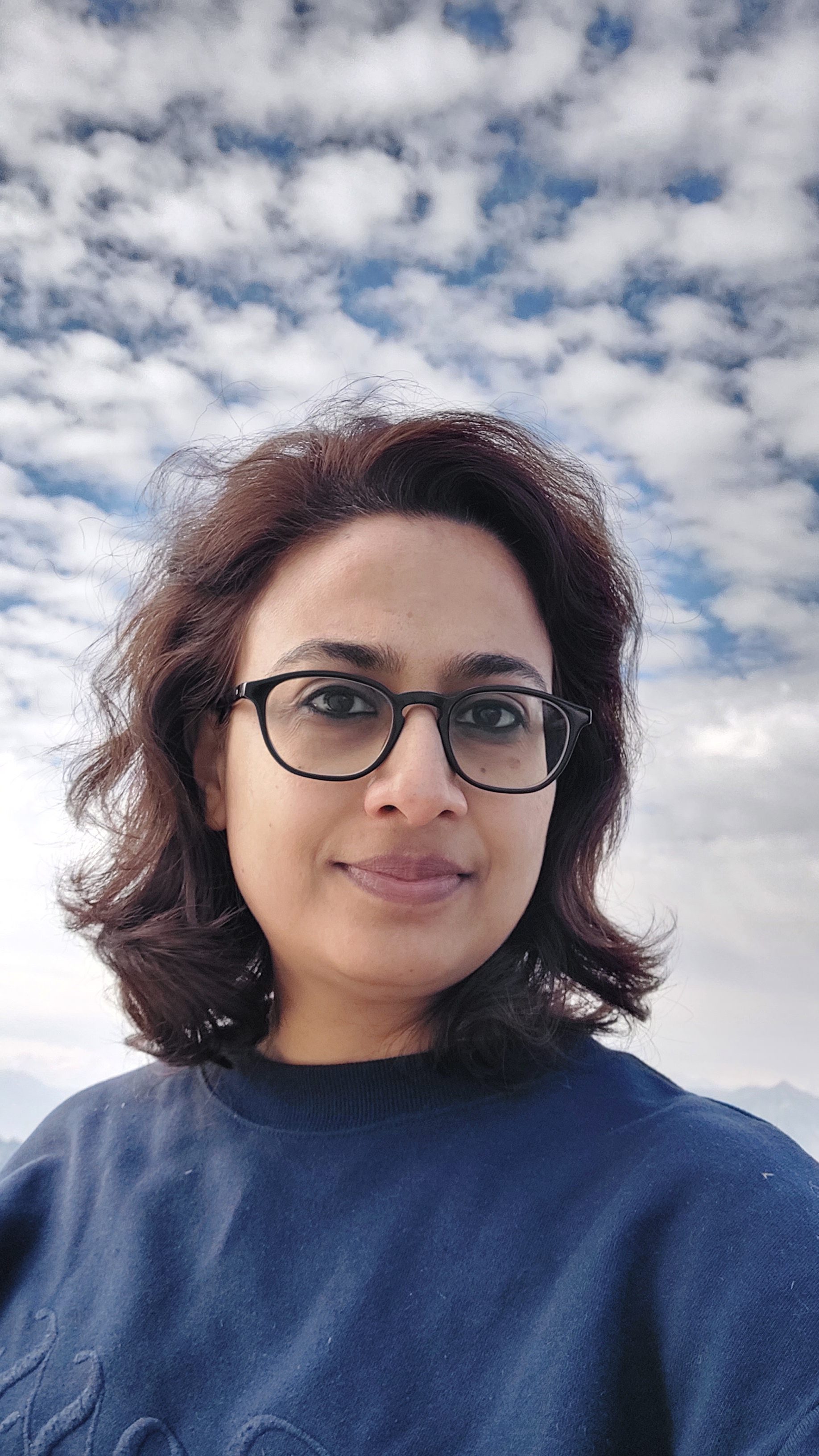The 101 years old Chhatrapati Shivaji Maharaj Vastu Sangrahalaya (CSMVS) in Mumbai, home to historical artefacts that tell stories about India’s past, hosted unusual visitors – contemporary art installations. Fourteen Indian artists were invited to create artworks for an exhibition Rhizome – Tracing Ecocultural Identities, curated by Jesal Thacker, amidst the museum’s vast collection. The display of the artworks is spread across the museum’s two levels and in thematically different sections. As a visitor to this exhibition, you need a map in hand to spot the works, which are not easy to locate or noticeable in the museum’s stellar collection. These artworks have been interposed in the museum to create a dialogue between them and the historical objects and in some instances even the architecture of the museum’s building. Artists were asked to choose from an array of sections in the museum such as Sculpture, Natural History, Miniature Art, Money and, Textile and Costume where they would place their responses to the respective articles.

Meghna Singh Patpatia, Realm of Convergence, 2023
Other than responding to the museum’s collection, ecology is the underscoring theme of this exhibition. This is reflected in the title in which a botanical term is used – rhizome which means an underground plant stem from which shoots and roots grow, for example, turmeric or ginger are rhizome. Taking a leaf out of ecocultural theory, the curator aims to explore the interconnected dots between human cultures and societies and their relation to nature and ecology as a whole.
The participating artists are Sumakshi Singh, Pooja Iranna, Meghna Singh Patpatia, Reena Saini Kallat, Sanjeev and Vaishali Khandekar, M Pravat, Viraag Desai, Atul Bhalla, Ratna Gupta, Sarika Bajaj, Aaditi Joshi, Arunkumar HG and GR Iranna.
Many of the exhibits do address the subject of environment upfront, some are on a tangent and concern themselves with the historical meanings of the museum’s artefacts. Some are illustrative compositions that use timeworn anecdotes like the one about the dwindling population of sparrows to signal damage to the environment. Though well-located in the museum, many of the works are marred by inadequate lighting.
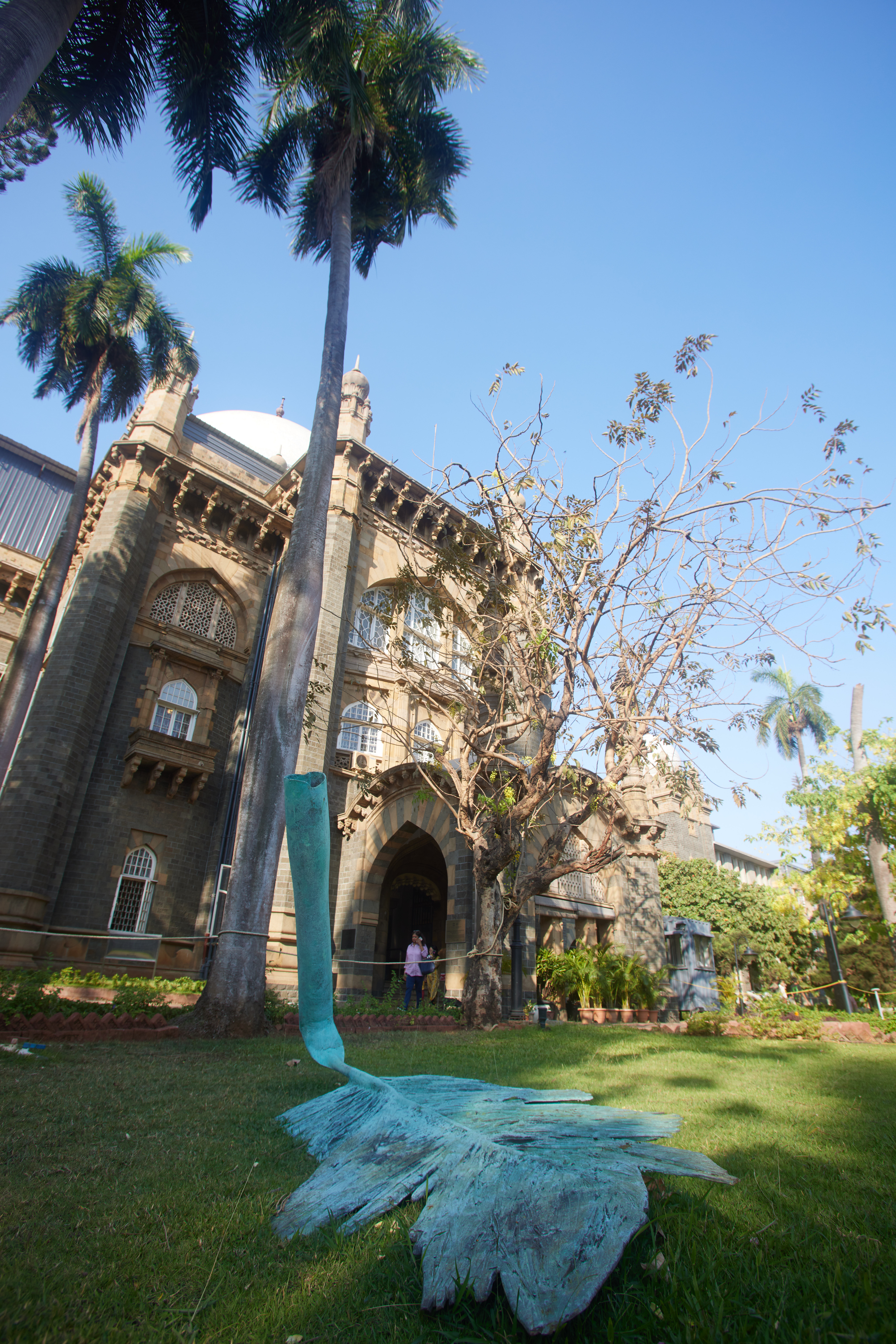
GR Iranna …and the branch rested..2023
GR Iranna’s sculpture titled …and the branch rested.. is placed in the garden lawn of the museum. It is a bronze sculpture mimicking a palm tree branch and is placed under an actual palm tree. Is it a direct tribute to nature or an ironic observation about the co-existence of man-made and the environment? The fronds coated in green patina rather than in weathered dried-up brown make you ponder.
Pooja Iranna’s signature, staple-pin sculptures Expansion Exposition are placed strategically under one of the museum’s outer arches in the Sculpture Gallery passageway. Imagine the passage of time portrayed as a landscape where under the arch that represents history there is a concrete jungle of non-descript buildings of today.
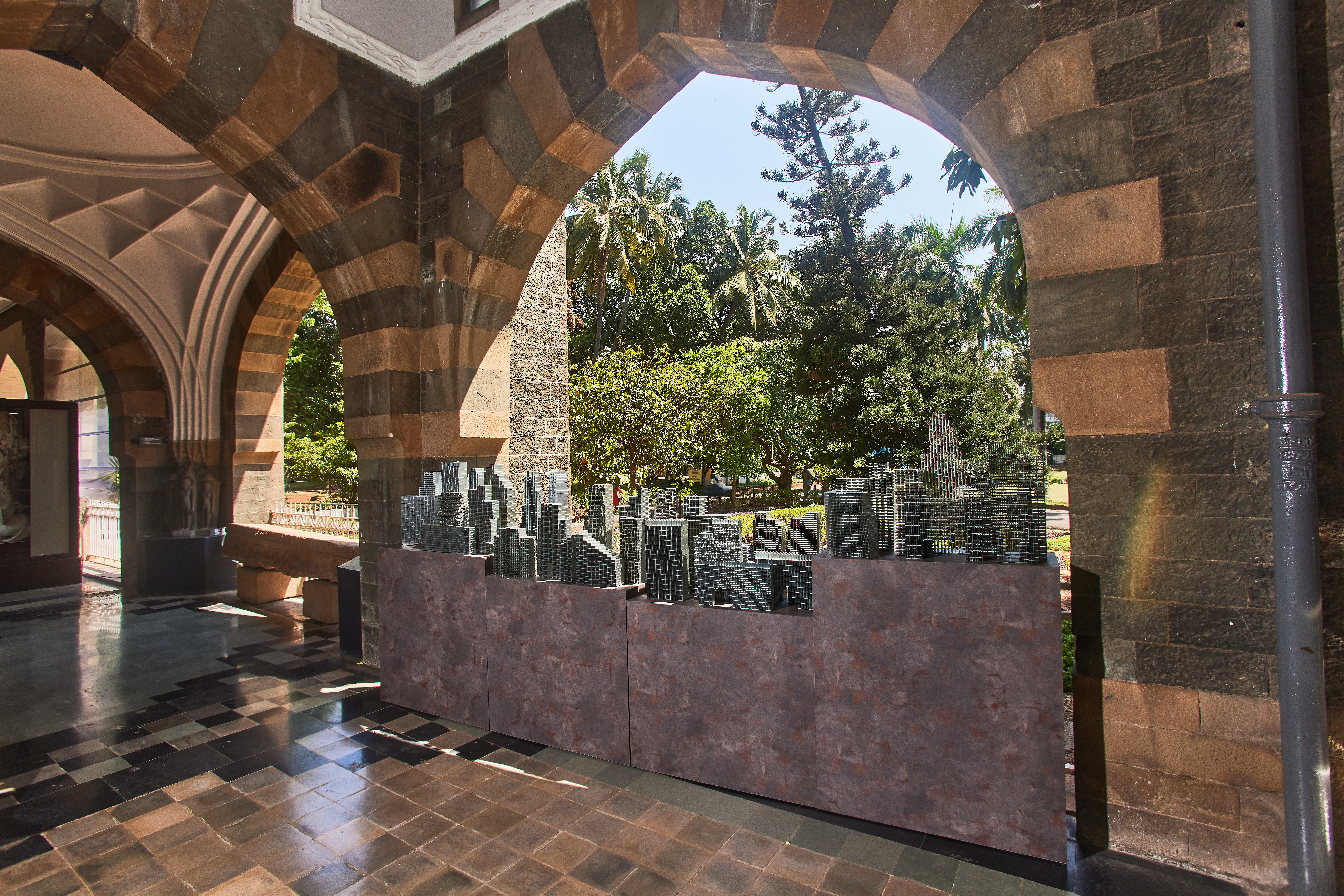
Pooja Iranna, Expansion Exposition, 2023
Sumakshi Singh’s delicate threadwork sculptures titled Spectres of Belonging sandwiched between clear glass mimic stone pillars of the kind seen at temple entrances. Placed in the Indian sculpture gallery they represent a stone structure but there is a contradiction here. Stone is an opaque, weighty object, yet the material she uses is the opposite, fragile and sheer. In a museum, centuries-old artefacts that are uprooted from temples are re-contextualised. Singh’s thread sculptures discuss the idea of present and absent, loss and redefinition.
Reena Saini Kallat’s Hyphenated Lives is a book that features images of her paintings from the 2016 series of works on paper by the same name. The paintings are images of reimagined fantastical creatures – hybrids of animals and birds representing two regions. The motifs address border politics and are a plea for peace and unity on the shared planet.
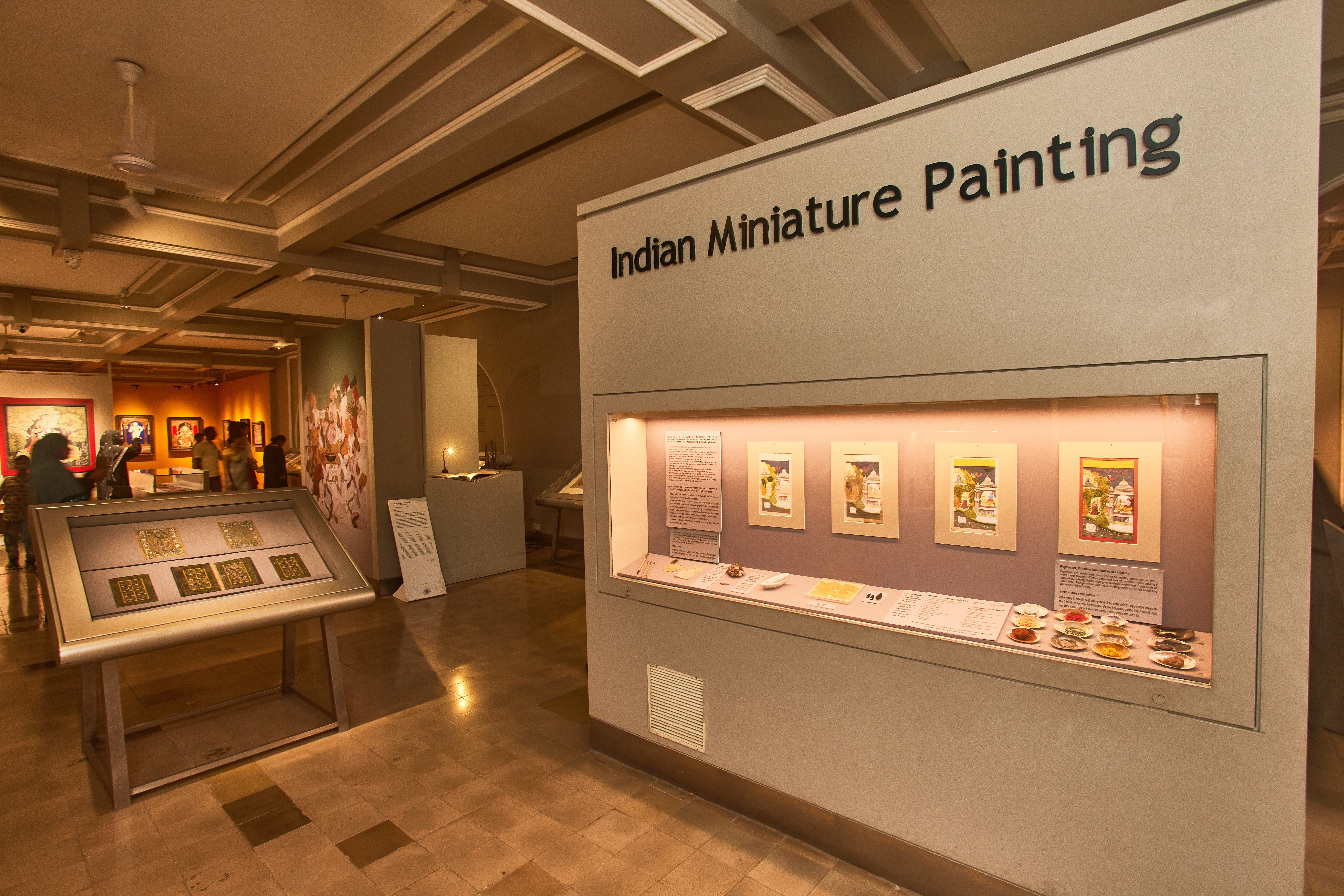
Reena Saini Kallat, Hyphenated Lives, 2023
Some of the noteworthy works that highlight human conflict with nature and address anxiety about the future are by Atul Bhalla, Sarika Bajaj, Aditi Joshi and Arunkumar HG.
One of the aims of the exhibition in a venue such as this prestigious museum which enjoys a healthy footfall is to reach its visitors from diverse backgrounds. This serves as an opportunity to present contemporary art to a new audience. The discoverability of these artworks and the depth of engagement by visitors is a subject worth exploring. The deliberate viewer of this exhibition might wonder if the same exhibit would work just as well or better in a regular white cube. One is left to mull over the question if there was a valuable addition to the experience of the show in the museum, or if it did a disservice in appreciating the artworks.
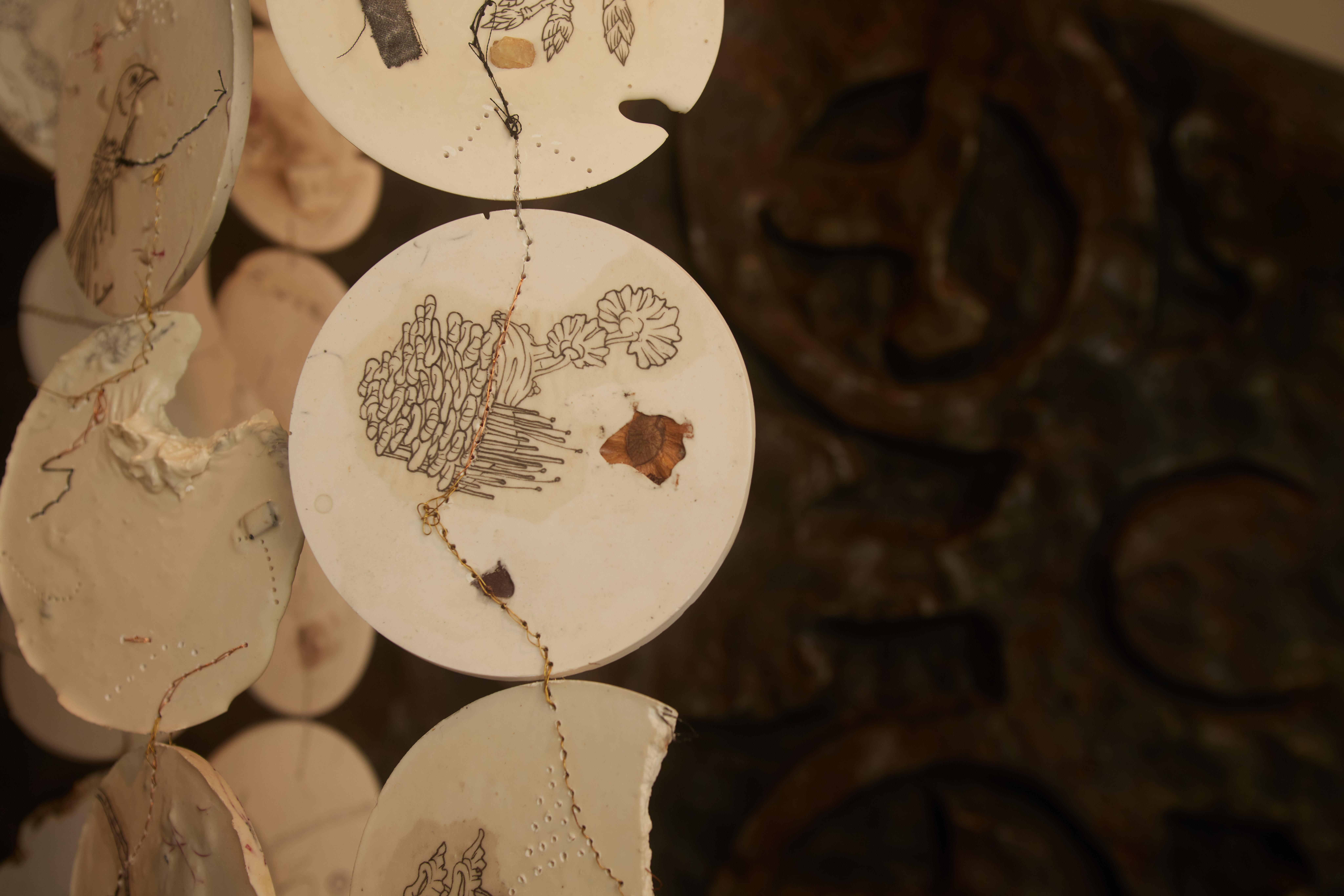
Ratna Gupta, In Memory of Everything That is Not, 2023
Rhizome – Tracing Ecocultural Identities, curated by Jesal Thacker, Chhatrapati Shivaji Maharaj Vasta Sangrahalaya (CSMVS), April 28 – June 22, 2023.
#Rhizome–TracingEcoculturalIdentities #JesalThacker #CSMVS #artreview #takeonart #takewriting #takecurator #artcurator #artwriting #artcritics #artpublications #curatorialwriting #artcriticism #arthistories #artdiscousre #artcollaboration #artcreatives #artcommunities #arthistory #criticaldiscourse









